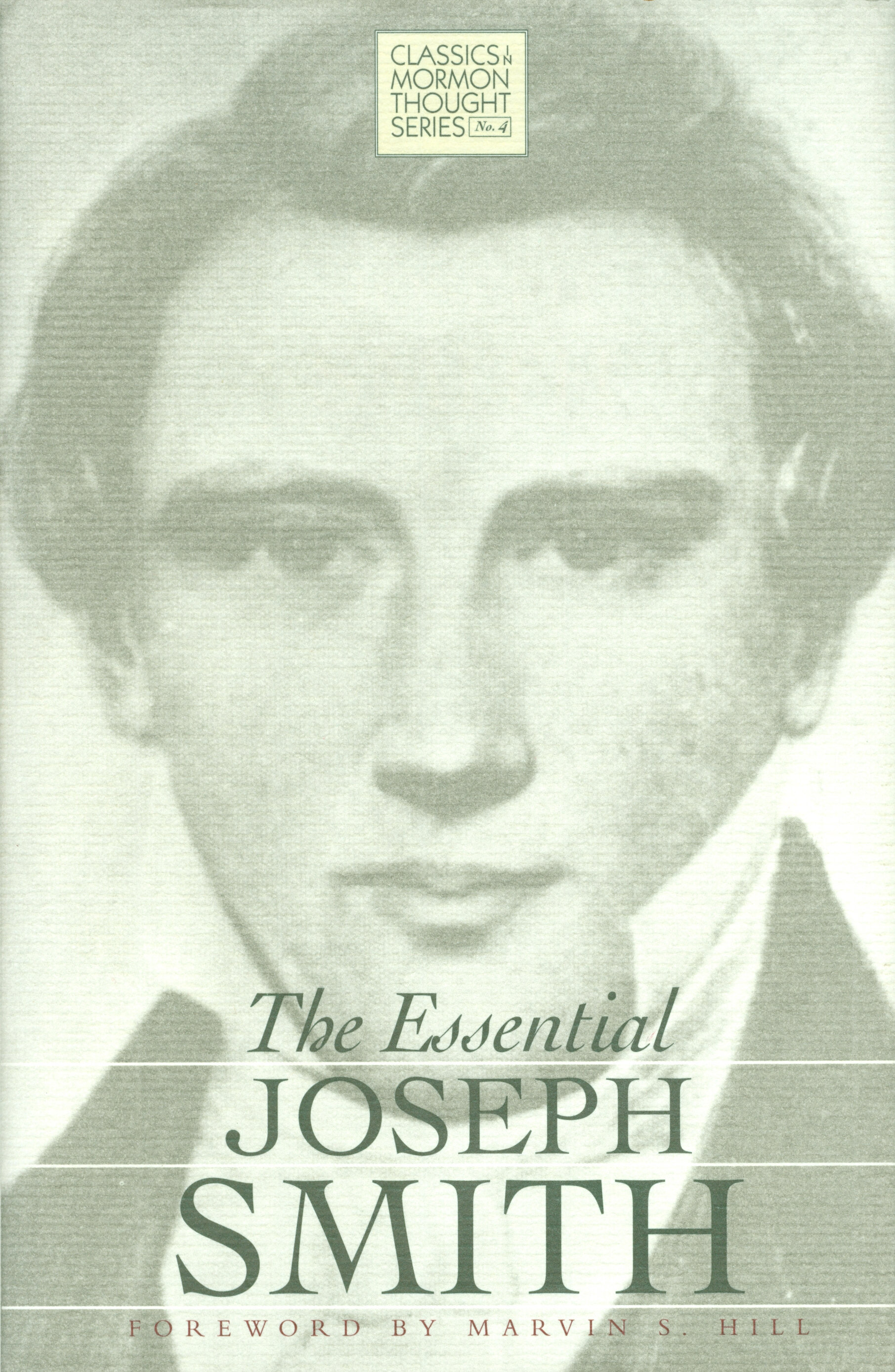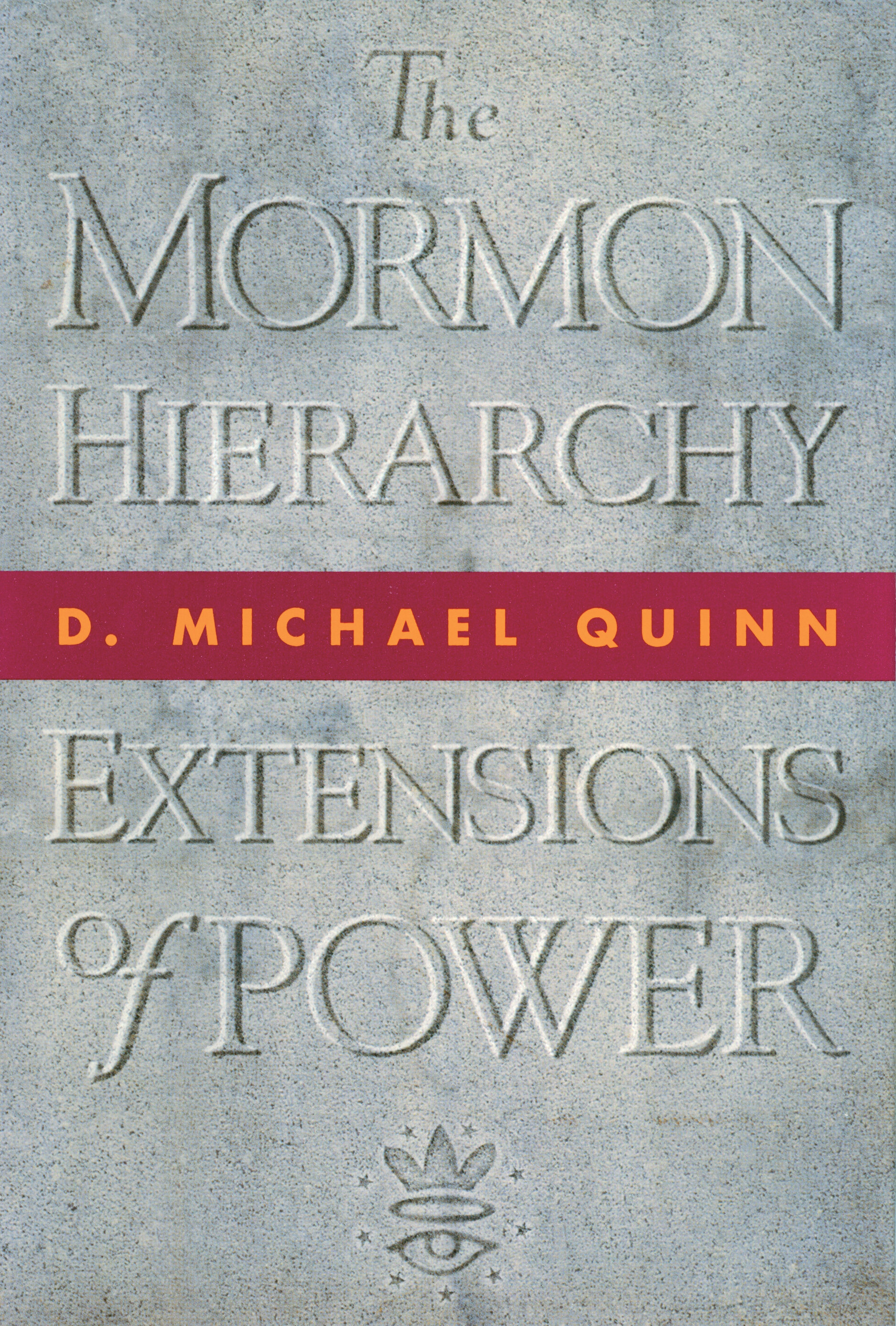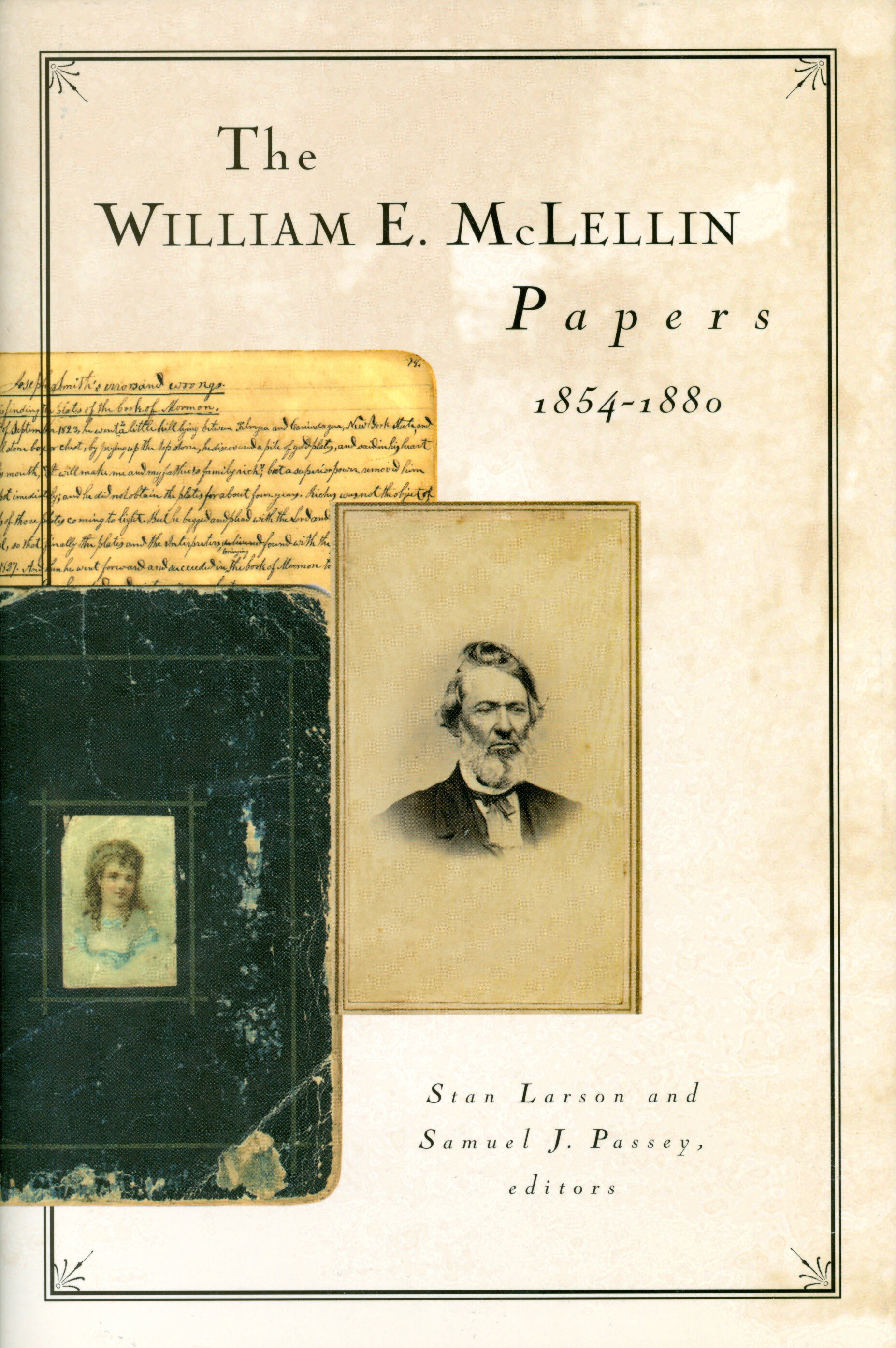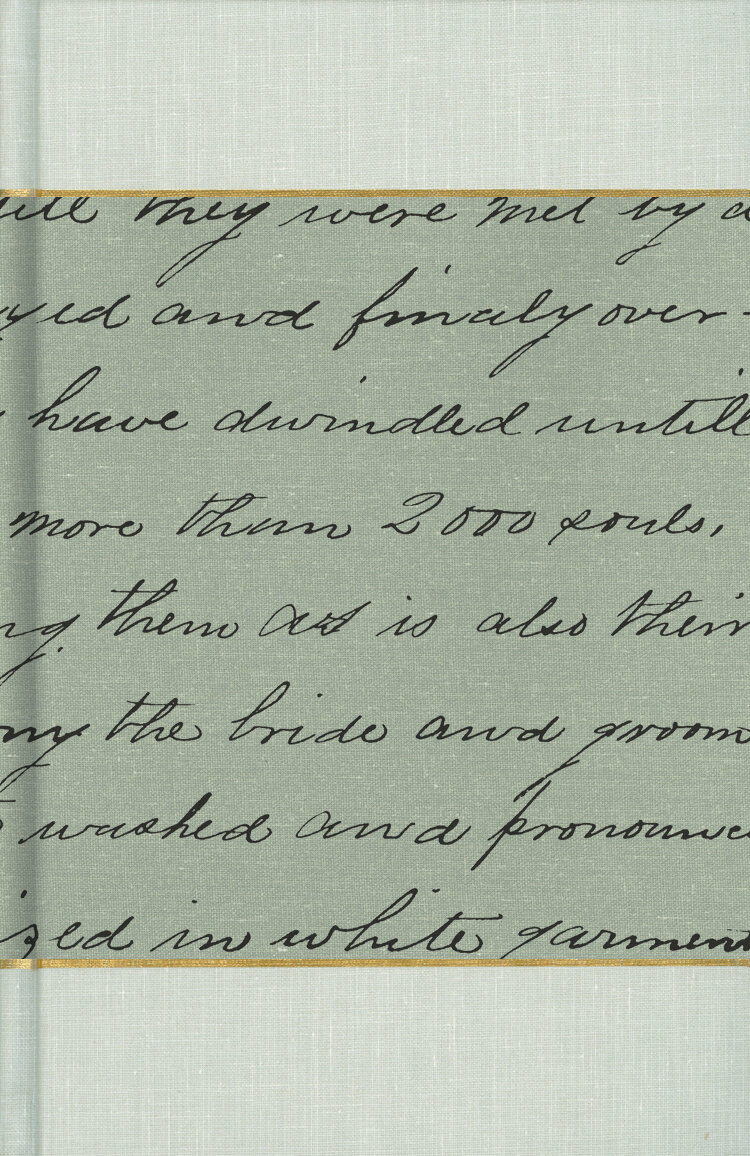 Image 1 of
Image 1 of


The Nauvoo Endowment Companies, 1845-1846
The Nauvoo Endowment Companies, 1845–1846:
A Documentary History
edited by Devery S. Anderson and Gary James Bergara
foreword by Richard S. Van Wagoner
For the two months the Nauvoo Temple was in operation (December 1845–February 1846), scribes carefully documented all activities and events taking place inside, including lectures on the endowment ceremony drama and sealing rituals. Their narratives begin with the lighting of fires and hauling of water each morning at 3:00 a.m. (many ordinance workers slept overnight in the temple) to late-night celebratory dancing (“We danced unto the Lord,” Brigham Young explained) and Sunday sermons delivered to the recently endowed.
Historians, biographers, and genealogists will find the names and dates of the initiates and documentation of sealings (including polygamous unions) to be of significance. Others will turn to the narrative portions of the records, including first-person accounts and minutes of meetings. For instance, as women cleaned the ceremonial robes for the next day’s endowment “companies” (or sessions), church officials would read from John C. Fremont’s published journal, anticipating their imminent exodus from Nauvoo for the Great Basin.
The sources extracted in this companion volume to Joseph Smith’s Quorum of the Anointed and The Development of LDS Temple Worship, include original temple ledger books and summaries of data compiled by early church scribes, including the “Book of Anointings”; “Book of Adoptions”; “Book of Proxey [sic]”; “General Record of the Seventies, Book B”; and William Clayton’s diary kept for Heber C. Kimball; as well as diary entries from Thomas Bullock, William Hyde, George Laub, Newel Knight, Franklin D. Richards, Abraham Owen Smoot, Erastus Snow, Hosea Stout, and others; and the autobiographies of Harrison Burgess, Rhoda Ann Fullmer, Joseph Holbrook, Joseph Hovey, Norton Jacob, Noah Packard, George Albert Smith, John Spiers, Nancy Ann Wilson, and others.
As scribes dutifully noted the peace, harmony, and order prevailing in the Nauvoo Temple during the closing months of 1845 and early months of 1846, the panic in their reports regarding the savage murders of Latter-day Saints in outlying areas and subsequent retaliation by church members was equally palpable. Guards were stationed at virtually every temple door, inside and out, to prevent attacks. Marshals periodically searched the temple interior for church leaders accused of counterfeiting. The odors of scented oil and fresh paint mixed with the sweat and smells of a frontier boomtown.
Such were the contradictions of this stressful time for Latter-day Saints. As the faithful covenanted within the temple to obey the laws of the land, church authorities evaded arrest by using body-doubles and other ruses to circumvent local law enforcement. Initiates pledged fidelity to their lawfully wedded spouses, then—sometimes within minutes—were sealed for time and eternity to additional wives. While the temple ceremony encouraged reverence and decorum, Brigham Young complained that church members sometimes peeked through partitions to observe others being endowed; and when evening came, Young himself led in dancing to live music in the Celestial Room. Vowing to live Christian lives, temple endowees were nonetheless asked to swear vengeance against the murderers of Joseph and Hyrum Smith.
Women were elevated to the status of queens and priestesses but were told to remember their place as subservient helpmeets to their husbands. In Sunday sermons, Brigham Young explained that the purpose of temple rites was to teach men the important lesson of the Garden of Eden, that “Adam, being full of integrity and not disposed to follow the woman nor listen to her, was permitted to receive the . . . priesthood.” Apostle George A. Smith agreed that “the woman ought to be in subjection to the man”; and Elder Heber C. Kimball added that some priesthood holders had “apostatized, being led by their wives; and if any such cases occur again, no more women will be admitted” to the temple.
In other words, it was a complex time as issues of women’s equality and Christian forbearance—themes central to the temple experience—struggled against competing demands for loyalty and obedience. Yet from the furnace of crisis can emerge the highest ideals of commitment and faith.
hardback: $25.00
The Nauvoo Endowment Companies, 1845–1846:
A Documentary History
edited by Devery S. Anderson and Gary James Bergara
foreword by Richard S. Van Wagoner
For the two months the Nauvoo Temple was in operation (December 1845–February 1846), scribes carefully documented all activities and events taking place inside, including lectures on the endowment ceremony drama and sealing rituals. Their narratives begin with the lighting of fires and hauling of water each morning at 3:00 a.m. (many ordinance workers slept overnight in the temple) to late-night celebratory dancing (“We danced unto the Lord,” Brigham Young explained) and Sunday sermons delivered to the recently endowed.
Historians, biographers, and genealogists will find the names and dates of the initiates and documentation of sealings (including polygamous unions) to be of significance. Others will turn to the narrative portions of the records, including first-person accounts and minutes of meetings. For instance, as women cleaned the ceremonial robes for the next day’s endowment “companies” (or sessions), church officials would read from John C. Fremont’s published journal, anticipating their imminent exodus from Nauvoo for the Great Basin.
The sources extracted in this companion volume to Joseph Smith’s Quorum of the Anointed and The Development of LDS Temple Worship, include original temple ledger books and summaries of data compiled by early church scribes, including the “Book of Anointings”; “Book of Adoptions”; “Book of Proxey [sic]”; “General Record of the Seventies, Book B”; and William Clayton’s diary kept for Heber C. Kimball; as well as diary entries from Thomas Bullock, William Hyde, George Laub, Newel Knight, Franklin D. Richards, Abraham Owen Smoot, Erastus Snow, Hosea Stout, and others; and the autobiographies of Harrison Burgess, Rhoda Ann Fullmer, Joseph Holbrook, Joseph Hovey, Norton Jacob, Noah Packard, George Albert Smith, John Spiers, Nancy Ann Wilson, and others.
As scribes dutifully noted the peace, harmony, and order prevailing in the Nauvoo Temple during the closing months of 1845 and early months of 1846, the panic in their reports regarding the savage murders of Latter-day Saints in outlying areas and subsequent retaliation by church members was equally palpable. Guards were stationed at virtually every temple door, inside and out, to prevent attacks. Marshals periodically searched the temple interior for church leaders accused of counterfeiting. The odors of scented oil and fresh paint mixed with the sweat and smells of a frontier boomtown.
Such were the contradictions of this stressful time for Latter-day Saints. As the faithful covenanted within the temple to obey the laws of the land, church authorities evaded arrest by using body-doubles and other ruses to circumvent local law enforcement. Initiates pledged fidelity to their lawfully wedded spouses, then—sometimes within minutes—were sealed for time and eternity to additional wives. While the temple ceremony encouraged reverence and decorum, Brigham Young complained that church members sometimes peeked through partitions to observe others being endowed; and when evening came, Young himself led in dancing to live music in the Celestial Room. Vowing to live Christian lives, temple endowees were nonetheless asked to swear vengeance against the murderers of Joseph and Hyrum Smith.
Women were elevated to the status of queens and priestesses but were told to remember their place as subservient helpmeets to their husbands. In Sunday sermons, Brigham Young explained that the purpose of temple rites was to teach men the important lesson of the Garden of Eden, that “Adam, being full of integrity and not disposed to follow the woman nor listen to her, was permitted to receive the . . . priesthood.” Apostle George A. Smith agreed that “the woman ought to be in subjection to the man”; and Elder Heber C. Kimball added that some priesthood holders had “apostatized, being led by their wives; and if any such cases occur again, no more women will be admitted” to the temple.
In other words, it was a complex time as issues of women’s equality and Christian forbearance—themes central to the temple experience—struggled against competing demands for loyalty and obedience. Yet from the furnace of crisis can emerge the highest ideals of commitment and faith.
hardback: $25.00
The Nauvoo Endowment Companies, 1845–1846:
A Documentary History
edited by Devery S. Anderson and Gary James Bergara
foreword by Richard S. Van Wagoner
For the two months the Nauvoo Temple was in operation (December 1845–February 1846), scribes carefully documented all activities and events taking place inside, including lectures on the endowment ceremony drama and sealing rituals. Their narratives begin with the lighting of fires and hauling of water each morning at 3:00 a.m. (many ordinance workers slept overnight in the temple) to late-night celebratory dancing (“We danced unto the Lord,” Brigham Young explained) and Sunday sermons delivered to the recently endowed.
Historians, biographers, and genealogists will find the names and dates of the initiates and documentation of sealings (including polygamous unions) to be of significance. Others will turn to the narrative portions of the records, including first-person accounts and minutes of meetings. For instance, as women cleaned the ceremonial robes for the next day’s endowment “companies” (or sessions), church officials would read from John C. Fremont’s published journal, anticipating their imminent exodus from Nauvoo for the Great Basin.
The sources extracted in this companion volume to Joseph Smith’s Quorum of the Anointed and The Development of LDS Temple Worship, include original temple ledger books and summaries of data compiled by early church scribes, including the “Book of Anointings”; “Book of Adoptions”; “Book of Proxey [sic]”; “General Record of the Seventies, Book B”; and William Clayton’s diary kept for Heber C. Kimball; as well as diary entries from Thomas Bullock, William Hyde, George Laub, Newel Knight, Franklin D. Richards, Abraham Owen Smoot, Erastus Snow, Hosea Stout, and others; and the autobiographies of Harrison Burgess, Rhoda Ann Fullmer, Joseph Holbrook, Joseph Hovey, Norton Jacob, Noah Packard, George Albert Smith, John Spiers, Nancy Ann Wilson, and others.
As scribes dutifully noted the peace, harmony, and order prevailing in the Nauvoo Temple during the closing months of 1845 and early months of 1846, the panic in their reports regarding the savage murders of Latter-day Saints in outlying areas and subsequent retaliation by church members was equally palpable. Guards were stationed at virtually every temple door, inside and out, to prevent attacks. Marshals periodically searched the temple interior for church leaders accused of counterfeiting. The odors of scented oil and fresh paint mixed with the sweat and smells of a frontier boomtown.
Such were the contradictions of this stressful time for Latter-day Saints. As the faithful covenanted within the temple to obey the laws of the land, church authorities evaded arrest by using body-doubles and other ruses to circumvent local law enforcement. Initiates pledged fidelity to their lawfully wedded spouses, then—sometimes within minutes—were sealed for time and eternity to additional wives. While the temple ceremony encouraged reverence and decorum, Brigham Young complained that church members sometimes peeked through partitions to observe others being endowed; and when evening came, Young himself led in dancing to live music in the Celestial Room. Vowing to live Christian lives, temple endowees were nonetheless asked to swear vengeance against the murderers of Joseph and Hyrum Smith.
Women were elevated to the status of queens and priestesses but were told to remember their place as subservient helpmeets to their husbands. In Sunday sermons, Brigham Young explained that the purpose of temple rites was to teach men the important lesson of the Garden of Eden, that “Adam, being full of integrity and not disposed to follow the woman nor listen to her, was permitted to receive the . . . priesthood.” Apostle George A. Smith agreed that “the woman ought to be in subjection to the man”; and Elder Heber C. Kimball added that some priesthood holders had “apostatized, being led by their wives; and if any such cases occur again, no more women will be admitted” to the temple.
In other words, it was a complex time as issues of women’s equality and Christian forbearance—themes central to the temple experience—struggled against competing demands for loyalty and obedience. Yet from the furnace of crisis can emerge the highest ideals of commitment and faith.
hardback: $25.00
Devery S. Anderson has published in Dialogue: A Journal of Mormon Thought (winner of the Dialogue “Best Article in History” Award for 1999), the Journal of Mormon History, and elsewhere. His book, Emmett Till: The Murder That Shocked the World and Propelled the Civil Rights Movement was published by the University Press of Mississippi in 2015. He holds a degree in history from the University of Utah and is finishing a master’s in publishing at the George Washington University. He lives in Salt Lake City.
Gary James Bergera is managing director of the Smith-Pettit Foundation in Salt Lake City, the company director of Signature Books, and former managing editor of Dialogue: A Journal of Mormon Thought. He is co-author of Brigham Young University: A House of Faith, editor of Line Upon Line: Essays on Mormon Doctrine, The Autobiography of B. H. Roberts, Statements of the LDS First Presidency, and Confessions of a Mormon Historian: The Diaries of Leonard J. Arrington, 1971–1997. He is co-editor of companion volumes of Joseph Smith’s Quorum of the Anointed, 1842-1845, and The Nauvoo Endowment Companies, 1845-1846, and On Desert Trails with Everett Ruess. He is a contributing author in The Prophet Puzzle: Interpretive Essays on Joseph Smith; Religion, Feminism, and Freedom of Conscience: A Mormon/Humanist Dialogue; and The Search for Harmony: Essays on Science and Mormonism. He is also the recipient of a Best Article Award from the Mormon History Association. He is currently on the boards of the Mormon History Association and the John Whitmer Historical Society.
Richard S. Van Wagoner was the author of Mormon Polygamy: A History (1985, 1989), Lehi: Portraits of a Utah Town (1990), Sidney Rigdon: A Portrait of Religious Excess (1994), Pioneering Lehi City: A 150-Year Pictorial History (2002), editor of The Complete Discourses of Brigham Young, five volumes (2010), and coauthor of A Book of Mormons (1982). He published articles in BYU Studies, Dialogue: A Journal of Mormon Thought, Sunstone, Utah Historical Quarterly, and Utah Holiday. He received writing awards from the Dialogue Foundation, the John Whitmer Historical Association, the Mormon History Association, and the Utah State Historical Society. He earned an M.S. degree from Brigham Young University (Provo, Utah) in 1970. Trained as a clinical audiologist, he owned and operated Mountain West Hearing Center in Salt Lake City. He was a lifelong resident of Lehi, Utah; a founding member of the Lehi Historical Preservation Commission; and served as Lehi City’s Historical Archivist. He was a co-founder, a member of the Board of Directors, and a member of the Editorial Advisory Committee of Signature Books (Salt Lake City).
Documentary History, History
ISBN: 978-1-56085-187-5





